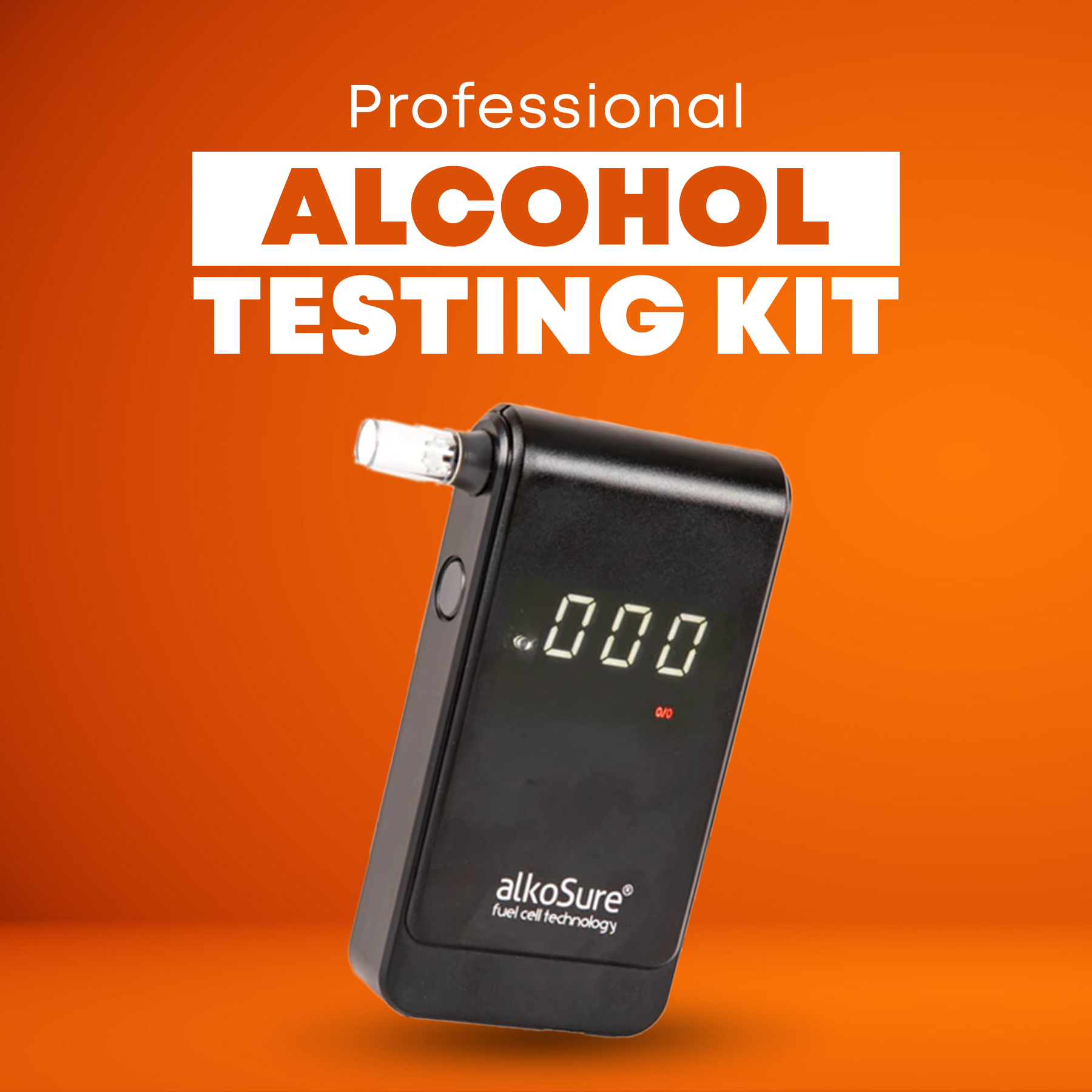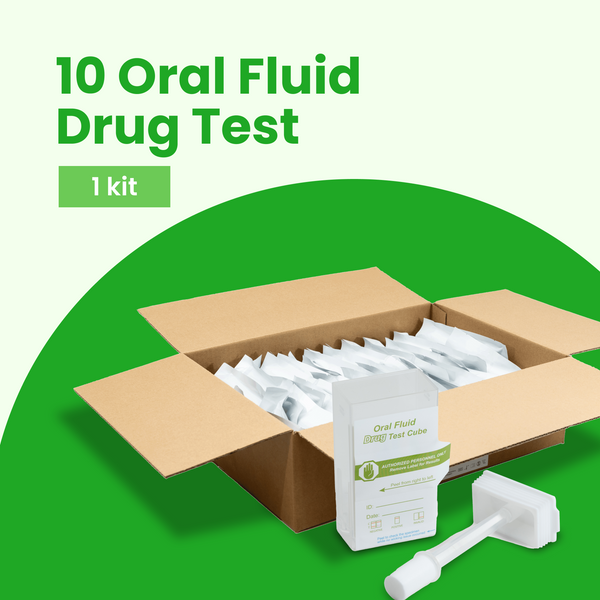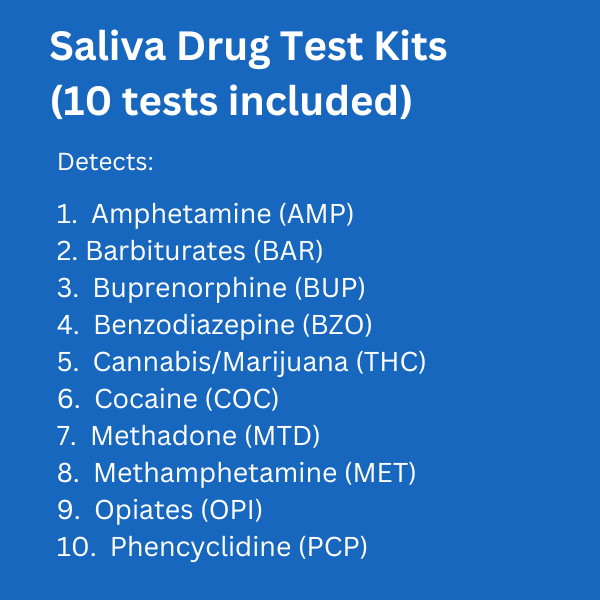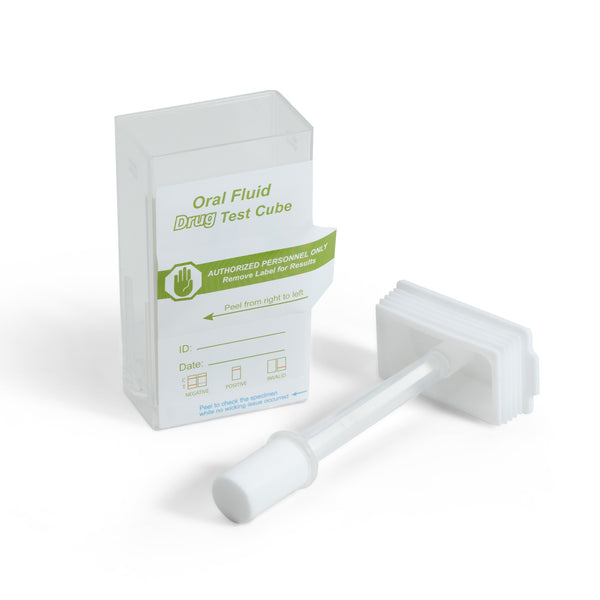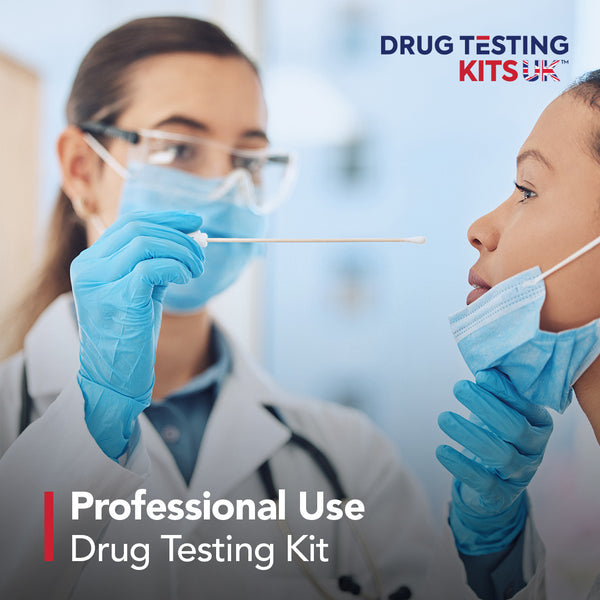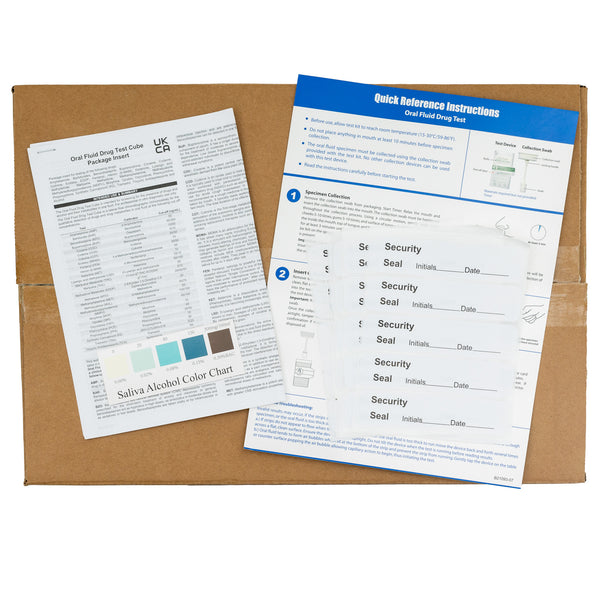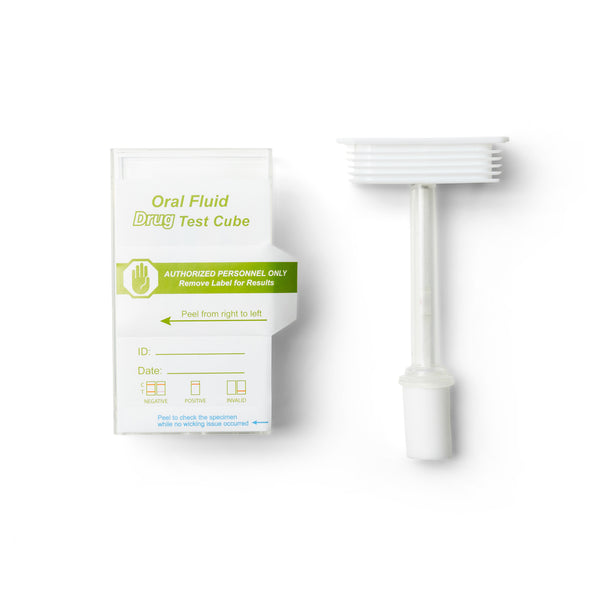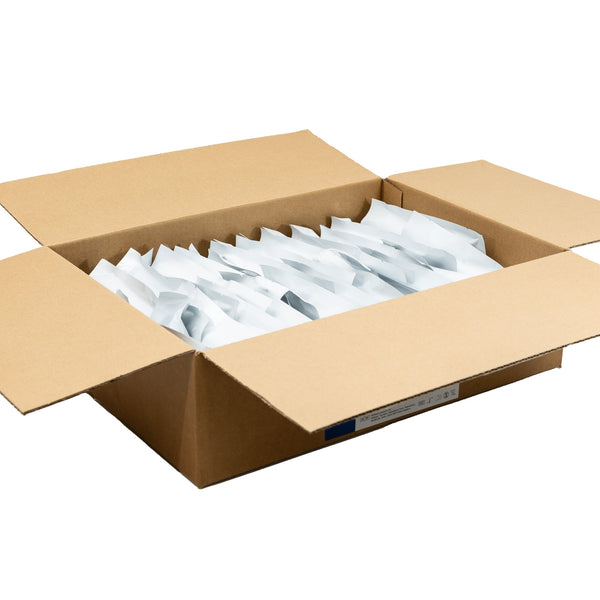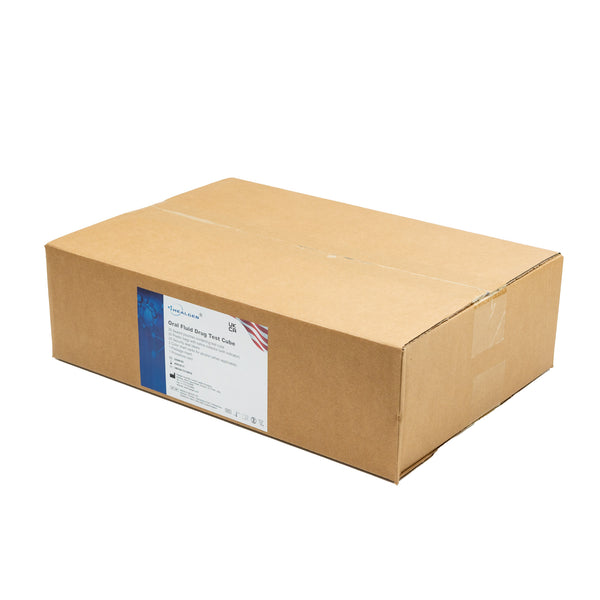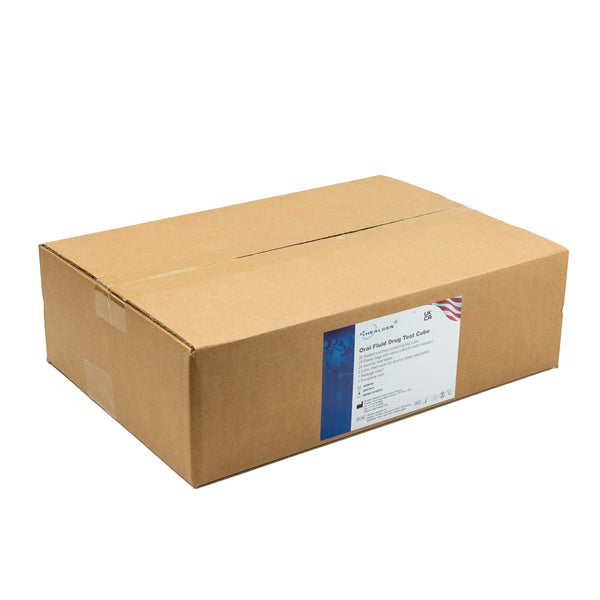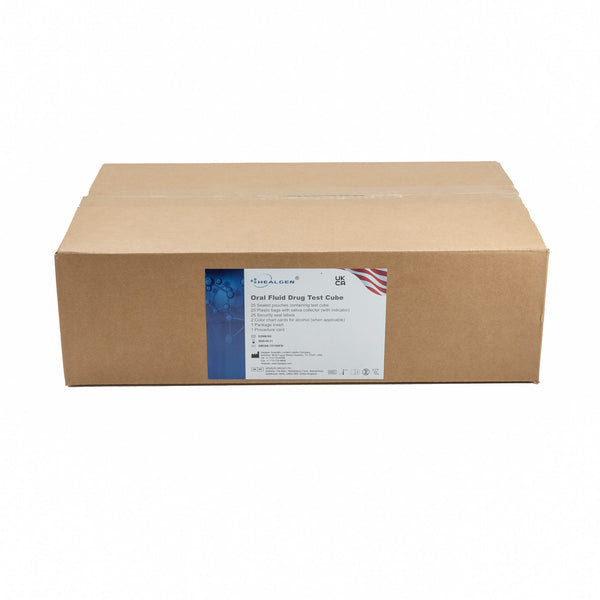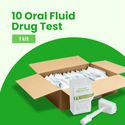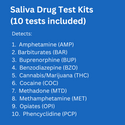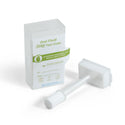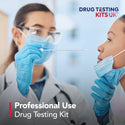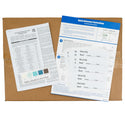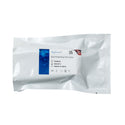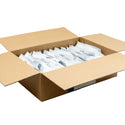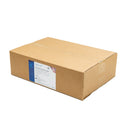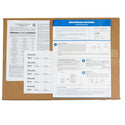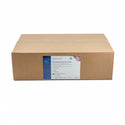Why you can trust Drug Testing Kits UK for advice on choosing the right drug testing products. Our team of UK drug and alcohol safety experts meticulously analyzes current regulations and scientific data while incorporating feedback from real-world users of our products. Additionally, we consult with healthcare and industry professionals to ensure that our recommendations are practical and valuable. This reliable information can guide your decision-making process when selecting drug and alcohol testing kits suitable for your needs.
When it comes to driving after drinking, many UK motorists find themselves in a grey area of uncertainty. How much is too much? What exactly does the law say? And how long should you wait before getting behind the wheel?
This comprehensive guide breaks down the UK breathalyzer limits in clear, straightforward terms. We'll explore the legal thresholds across different parts of the UK, how alcohol affects your driving ability, and practical ways to ensure you're safe to drive. Whether you're concerned about morning-after driving or simply want to understand the science behind breath testing, this article provides the facts you need to make informed decisions.

What Is the Breathalyzer Limit in the UK?
The legal breathalyzer limit varies depending on where you are in the UK. Here's what you need to know:
In England, Wales, and Northern Ireland, the legal limit is:
-
35 micrograms of alcohol per 100 millilitres of breath
-
80 milligrams of alcohol per 100 millilitres of blood
-
107 milligrams of alcohol per 100 millilitres of urine
In Scotland, the limits are lower:
-
22 micrograms of alcohol per 100 millilitres of breath
-
50 milligrams of alcohol per 100 millilitres of blood
-
67 milligrams of alcohol per 100 millilitres of urine
These numbers might seem abstract, so let's put them in context. The breath alcohol limit in England, Wales, and Northern Ireland is roughly equivalent to two pints of regular-strength beer for an average-sized man or a large glass of wine for an average-sized woman. However, these are just estimates—individual factors like metabolism, weight, and food consumption significantly affect how your body processes alcohol.
|
Region |
Breath Limit |
Blood Limit |
Urine Limit |
|
England, Wales & NI |
35μg/100ml |
80mg/100ml |
107mg/100ml |
|
Scotland |
22μg/100ml |
50mg/100ml |
67mg/100ml |
How Does Alcohol Affect Driving Ability?
Even small amounts of alcohol can impair your ability to drive safely. Here's what happens when you drink and drive:
- Slowed reaction time: Alcohol delays your response to sudden changes on the road, like a pedestrian stepping out or a car braking ahead. Even a delay of half a second can mean the difference between stopping safely and causing an accident.
- Reduced coordination: Steering, braking, and using controls become less precise. You might find yourself drifting between lanes or misjudging distances.
- Impaired judgment: Alcohol affects your ability to assess situations correctly. You might take risks you normally wouldn't, like speeding or overtaking dangerously.
- Decreased concentration: Maintaining focus on the road becomes harder, making you more susceptible to distractions.
- Blurred or double vision: Alcohol can affect your eyesight, making it difficult to judge distances and speeds accurately.
What's particularly dangerous is that you might feel perfectly capable of driving even when you're over the limit. This false confidence is one of alcohol's most hazardous effects—you may not realize how impaired you actually are.
Is the Limit the Same in Scotland and England?
As shown in the table above, Scotland has stricter drink-driving limits than the rest of the UK. This difference means that the same amount of alcohol could put you over the legal limit in Scotland but under it in England, Wales, or Northern Ireland.
Scotland reduced its limit in December 2014 to align with most other European countries. The Scottish Government made this change based on evidence that the risk of having an accident increases significantly even at lower alcohol levels.
This regional difference is particularly important if you're driving across the border. For example, if you have a drink in Carlisle (England) and then drive to Dumfries (Scotland), you could be legally under the limit when starting your journey but over the limit by the time you cross the border—without having consumed any additional alcohol.
The safest approach, especially if you're traveling between different parts of the UK, is to avoid alcohol completely if you plan to drive.
What Does a Breathalyzer Measure?
A breathalyzer measures the concentration of alcohol in your breath, known as Breath Alcohol Content (BrAC). This is expressed in micrograms of alcohol per 100 millilitres of breath.
When you drink alcohol, it enters your bloodstream through your digestive system. As blood passes through your lungs, some of the alcohol transfers to the air in your lungs and is exhaled when you breathe out. The amount of alcohol in your breath correlates reliably with the amount in your bloodstream.
Police breathalyzers are designed to detect this alcohol and convert the reading to show how much is present. The relationship between breath alcohol and blood alcohol is approximately 2,300:1, meaning that 2,300ml of breath contains roughly the same amount of alcohol as 1ml of blood.
Law enforcement primarily uses breath testing because it's:
-
Non-invasive (no needles required)
-
Quick to administer (results in minutes)
-
Easily performed at roadside
-
Sufficiently accurate for initial screening
If you fail a roadside breath test, you'll typically be taken to a police station for a more accurate evidential breath test on approved devices, or in some cases, for blood or urine testing.
How Many Units of Alcohol Can I Have Before Driving?
This is perhaps the most common question people ask, but unfortunately, there's no simple answer. The concept of alcohol units helps us understand how much pure alcohol we're consuming, but translating this into a "safe" number of drinks for driving isn't straightforward.
One unit of alcohol contains 10ml (or 8g) of pure alcohol. Here's approximately how many units are in common drinks:
-
Pint of lower-strength lager (3.6%): 2 units
-
Pint of higher-strength lager (5.2%): 3 units
-
Standard glass of wine (175ml, 12%): 2.1 units
-
Large glass of wine (250ml, 12%): 3 units
-
Single shot of spirits (25ml, 40%): 1 unit
-
Double shot of spirits (50ml, 40%): 2 units
So how many units can you have before reaching the limit? It varies significantly based on:
-
Your gender (women generally process alcohol more slowly)
-
Your weight and body size
-
Your metabolism and liver function
-
Whether you've eaten recently
-
Your stress levels and fatigue
-
Any medications you're taking
-
Your overall health
Because of these variables, two people drinking identical amounts could have very different breath alcohol readings. One might be under the limit while the other is over.
The only truly safe approach is not to drink at all if you're planning to drive. If you do choose to drink, using a personal breathalyzer can help you make a more informed decision about when it's safe to drive again.
How Long Does Alcohol Stay in Your System?
On average, the body processes approximately one unit of alcohol per hour. However, this is just a rough guideline—the actual rate varies from person to person and can be affected by numerous factors.
After drinking, alcohol is absorbed into your bloodstream primarily through your small intestine. Your liver then works to break it down, but can only process a limited amount at a time. Any excess alcohol continues to circulate in your bloodstream until your liver can catch up.
Several factors affect how quickly your body processes alcohol:
-
Food in your stomach (slows absorption)
-
Hydration levels
-
Age (metabolism slows as we age)
-
Liver health
-
Medications
-
Genetics
It's important to understand that there's no way to speed up this process significantly. Common myths like drinking coffee, taking a cold shower, or exercising don't actually reduce your blood alcohol concentration—they might make you feel more alert, but the alcohol is still in your system.
This is why "morning after" drink-driving is such a common issue. After a night of heavy drinking, you might still be over the limit the following morning, even if you feel fine.
Estimated Time for Alcohol to Clear Your System
The table below provides rough estimates of how long it takes for different drinks to clear your system. Remember, these are approximations based on average processing rates—your actual clearance time may vary.
|
Drink |
Alcohol Content |
Approximate Units |
|
Pint of regular beer (4%) |
2.3 units |
2-3 hours |
|
Pint of strong beer (5.2%) |
3 units |
3-4 hours |
|
Bottle of lager (330ml, 5%) |
1.7 units |
1.5-2 hours |
|
Standard glass of wine (175ml, 12%) |
2.1 units |
2-3 hours |
|
Large glass of wine (250ml, 12%) |
3 units |
3-4 hours |
|
Single shot of spirits (25ml, 40%) |
1 unit |
1 hour |
|
Double shot of spirits (50ml, 40%) |
2 units |
2 hours |
|
Bottle of wine (750ml, 12%) |
9 units |
9+ hours |
For a night out involving multiple drinks, the clearance time adds up. For example, if you have three pints of strong beer (9 units total) finishing at midnight, you might not be safe to drive until at least 9am the next morning—and possibly later depending on your personal metabolism.
Want to know for sure? A home breathalyzer can help you make a more informed decision about when it's safe to drive again.
What Happens If You're Caught Over the Limit?
The penalties for drink driving in the UK are severe, reflecting the serious risk this behavior poses to public safety. If you're caught driving while over the legal alcohol limit, you could face:
-
Driving ban: A minimum 12-month driving disqualification for a first offense. This increases to 3 years if you're convicted twice in 10 years.
-
Unlimited fine: The courts can impose an unlimited fine based on the severity of the offense and your income.
-
Criminal record: A drink-driving conviction stays on your license for 11 years and remains on your criminal record.
-
Imprisonment: Up to 6 months for a standard drink-driving offense, increasing to 14 years if you cause death by drink-driving.
-
Increased insurance costs: Your car insurance premiums will increase significantly after a drink-driving conviction, potentially by several thousand pounds per year.
-
Impact on employment: Many jobs require a clean driving license. You may lose your job if driving is essential to your role, and future employment prospects could be affected.
-
Travel restrictions: Some countries, including the USA, can refuse entry to people with drink-driving convictions.
It's also worth noting that refusing to provide a breath, blood, or urine sample when requested by police carries the same penalties as being found over the limit—you can't avoid punishment by refusing the test.
Breathalyzer Technology Explained
Not all breathalyzers are created equal. Understanding the technology behind these devices can help you choose one that provides reliable results.
There are two main types of breathalyzer sensors:
Semiconductor sensors: These are typically found in lower-cost personal breathalyzers. They work by detecting changes in electrical conductivity when alcohol is present. While affordable and compact, they're generally less accurate than fuel cell sensors and may be affected by other substances like mouthwash or breath mints.
Fuel cell sensors: These are the gold standard for breath alcohol testing and are used by police forces worldwide. They work through an electrochemical process where alcohol is oxidized, generating an electrical current proportional to the alcohol concentration. Fuel cell breathalyzers offer greater accuracy, specificity for ethanol (drinking alcohol), and consistency over time.
When choosing a personal breathalyzer, look for:
-
Accuracy rating: The best devices have an accuracy of ±0.01% BAC or better
-
Calibration: Regular calibration ensures continued accuracy
-
Certification: CE marking indicates compliance with European safety standards
-
Response time: How quickly the device provides results
-
Memory function: Useful for tracking readings over time
-
Blow technique: Some require specific blowing techniques for accurate results
Professional-grade breathalyzers with fuel cell technology provide the most reliable results, though they come at a higher price point. For occasional personal use, a quality semiconductor device may be sufficient, but for regular or critical testing, a fuel cell breathalyzer is worth the investment.
Breath Tests vs. Blood and Urine Tests
While roadside breathalyzers are the most common method of testing for alcohol, they're not the only option. Here's how the different testing methods compare:

-
Advantages: Non-invasive, immediate results, portable, no medical personnel required
-
Limitations: Slightly less accurate than blood tests, can be affected by residual mouth alcohol
-
Usage: Initial roadside screening and evidential testing at police stations
Blood tests:

-
Advantages: Most accurate method, direct measurement of blood alcohol concentration
-
Limitations: Invasive, requires medical personnel, results not immediate
-
Usage: When breath testing isn't possible, when greater accuracy is needed, or when drugs are also suspected
Urine tests:

-
Advantages: Non-invasive, doesn't require specialized equipment
-
Limitations: Less accurate than breath or blood, reflects alcohol consumed over a longer period
-
Usage: When breath and blood testing aren't possible
In the UK legal system, roadside breath tests are used for initial screening. If you fail this test, you'll be taken to a police station for evidential testing on approved devices. If the evidential breath test shows you're over the limit, this reading is typically used for prosecution.
However, you have the right to request a blood or urine test instead of the evidential breath test if the breath reading is less than 40% over the legal limit (i.e., between 35 and 50 micrograms per 100ml of breath in England, Wales, and Northern Ireland). This is sometimes called the "statutory option."
Can You Legally Drive the Morning After?
One of the most common misconceptions about drink driving is that a good night's sleep will clear alcohol from your system. In reality, many drivers are caught over the limit the morning after drinking—often when they feel completely fine to drive.
Here's why morning-after driving can be so risky:
-
If you've had a heavy night of drinking, alcohol can remain in your bloodstream for 12-14 hours or even longer
-
Your body continues to process alcohol at roughly one unit per hour, even while you sleep
-
A bottle of wine (9 units) could take 9+ hours to clear your system
-
Sleep deprivation compounds the effects of any remaining alcohol
-
You might feel sober even when you're still over the legal limit
For example, if you finish drinking at midnight after consuming 10 units (about 4 pints of beer), you might not be under the limit until at least 10am the next day—and that's assuming average metabolism. If you have a slower metabolism or have consumed more alcohol, it could be afternoon before you're legally safe to drive.
The safest approach is to use a personal breathalyzer to check your levels before driving the morning after drinking. This removes the guesswork and provides objective information about whether you're under the legal limit.
What to Do If You Test Positive at Home
If you use a personal breathalyzer and find you're over the legal limit, here's what to do:
Wait longer before driving: The only reliable way to lower your blood alcohol concentration is to give your body time to process the alcohol. There's no shortcut or trick to speed this up significantly.
Stay hydrated: While drinking water won't directly lower your BAC, staying hydrated helps your body function optimally and may help you feel better as the alcohol clears your system.
Eat something: Food won't reduce your BAC, but it can help with hangover symptoms and provide energy as your body processes the alcohol.
Rest: If possible, get more sleep. This won't speed up alcohol processing but will help you feel more alert once you are under the limit.
Retest after 30-60 minutes: This will help you track how quickly your BAC is dropping and give you a better idea of when you might be under the limit.
It's important to understand that common "sobering up" methods don't work:
-
Coffee might make you feel more alert but doesn't lower your BAC
-
Cold showers don't reduce alcohol in your bloodstream
-
Exercise might make you sweat, but doesn't significantly speed up alcohol elimination
-
"Hair of the dog" (drinking more alcohol) only delays the process and can make things worse
The only reliable approach is patience—give your body the time it needs to process the alcohol naturally.
Why Use a Breathalyzer?
Personal breathalyzers provide peace of mind and objective information about your alcohol levels. Here are some scenarios where having your own breathalyzer can be valuable:
Morning after testing: Remove the guesswork about whether you're safe to drive after a night out.
Social events: If you're at a party or pub and plan to drive later, a breathalyzer can help you make informed decisions about when to stop drinking or whether to find alternative transportation.
Designated driver checks: If you're the designated driver but had one drink earlier, a breathalyzer can confirm you're under the limit before driving.
Workplace safety: For employers in safety-critical industries, breathalyzers can help ensure staff aren't impaired when operating machinery or vehicles.
Education and awareness: Using a breathalyzer can help you understand how different drinks affect your BAC and how long alcohol actually stays in your system.
The benefits of having a personal breathalyzer include:
- Instant clarity: No more guessing whether you're under the limit—you get an objective measurement.
- Portability and discretion: Modern breathalyzers are compact enough to fit in a pocket or handbag, allowing for discreet testing whenever needed.
- Affordability: While professional-grade breathalyzers represent an investment, they're far less expensive than the costs associated with a drink-driving conviction.
- Safety for yourself and others: Perhaps most importantly, a breathalyzer helps you make responsible decisions that keep everyone safer on the roads.
Drug Testing Kits UK offers a range of CE-certified breathalyzers, including fuel cell models that provide police-grade accuracy. These devices are calibrated to UK legal limits and come with clear instructions for reliable testing.
FAQs
How many drinks is 35 micrograms of alcohol?
There's no simple conversion between drinks and micrograms of alcohol in breath because individual factors vary so widely. For an average man, approximately 1-2 pints of regular beer or 1-2 standard glasses of wine might put you near the 35 microgram limit. For women or smaller individuals, even one drink could potentially put you over. The safest approach is to use a breathalyzer rather than trying to count drinks.
Is one glass of wine OK to drive in the UK?
For some people, one standard glass of wine (175ml) might keep them under the legal limit, while for others—particularly smaller individuals or those who haven't eaten—it could put them over. Factors like your weight, gender, metabolism, and whether you've eaten all affect how your body processes alcohol. If you choose to have a glass of wine, waiting at least 2-3 hours before driving and using a breathalyzer to check your levels is the safest approach.
How long after 3 pints can I drive?
Three pints of average-strength beer (4%) contain approximately 6-7 units of alcohol. Using the general guideline of one unit per hour, you might need to wait 6-7 hours after finishing your drinks before being under the limit. However, this varies based on individual factors. Stronger beers would require even longer waiting periods. A personal breathalyzer can help determine when you're actually under the limit.
Is the breathalyzer limit lower in Scotland?
Yes, Scotland has a lower breathalyzer limit than the rest of the UK. In Scotland, the limit is 22 micrograms of alcohol per 100 millilitres of breath, compared to 35 micrograms in England, Wales, and Northern Ireland. This means you can be legally over the limit in Scotland while still being under the limit in other parts of the UK with the same amount of alcohol in your system.
Can police breathalyzers give false positives?
Police roadside breathalyzers rarely give false positives for alcohol, as they're designed to specifically detect ethanol (drinking alcohol). However, they can occasionally be affected by certain factors like residual mouth alcohol from recent drinking, some mouthwashes, or certain medical conditions like diabetes. This is why police follow up positive roadside tests with more accurate evidential testing at the station, which eliminates most potential sources of error.
What's the best home breathalyzer for UK drivers?
The best home breathalyzers for UK drivers are those with fuel cell sensor technology, which provides accuracy similar to police devices. Look for breathalyzers that are calibrated to UK limits, CE-certified, and from reputable manufacturers. Features to consider include accuracy rating (ideally ±0.01% BAC or better), ease of use, and whether recalibration services are available. Drug Testing Kits UK offers several models that meet these criteria, with options to suit different budgets and needs.
Can I refuse a breathalyzer test in the UK?
You can legally refuse a breathalyzer test, but doing so without a reasonable excuse (such as a medical condition that prevents you from providing a sample) is an offense that carries the same penalties as failing the test. This includes a minimum 12-month driving ban, an unlimited fine, and a criminal record. Police can also use your refusal as grounds to arrest you and take you to the station for further testing.
Conclusion
Understanding the UK's breathalyzer limits is essential for anyone who drives and consumes alcohol, even occasionally. The legal thresholds are set based on evidence about impairment, and exceeding them puts both you and others at serious risk.
The key takeaways from this guide are:
-
Legal limits vary across the UK, with Scotland having stricter standards
-
There's no reliable formula for how many drinks will put you over the limit
-
Alcohol remains in your system much longer than most people realize
-
The only reliable way to know if you're under the limit is to test yourself
-
The consequences of drink driving are severe and long-lasting
Rather than guessing or relying on "rules of thumb," consider investing in a quality breathalyzer to remove the uncertainty. Drug Testing Kits UK offers a range of reliable alcohol testing devices that can help you make informed decisions about when it's safe to drive.
Remember, the safest approach is always to separate drinking and driving completely. If you're planning to drink, arrange alternative transportation or designate a non-drinking driver. Your life—and the lives of others—are worth more than the convenience of driving after drinking.



 03333 704 704
03333 704 704


